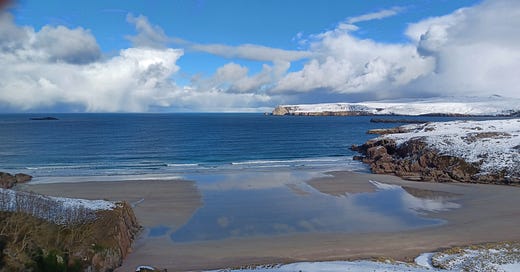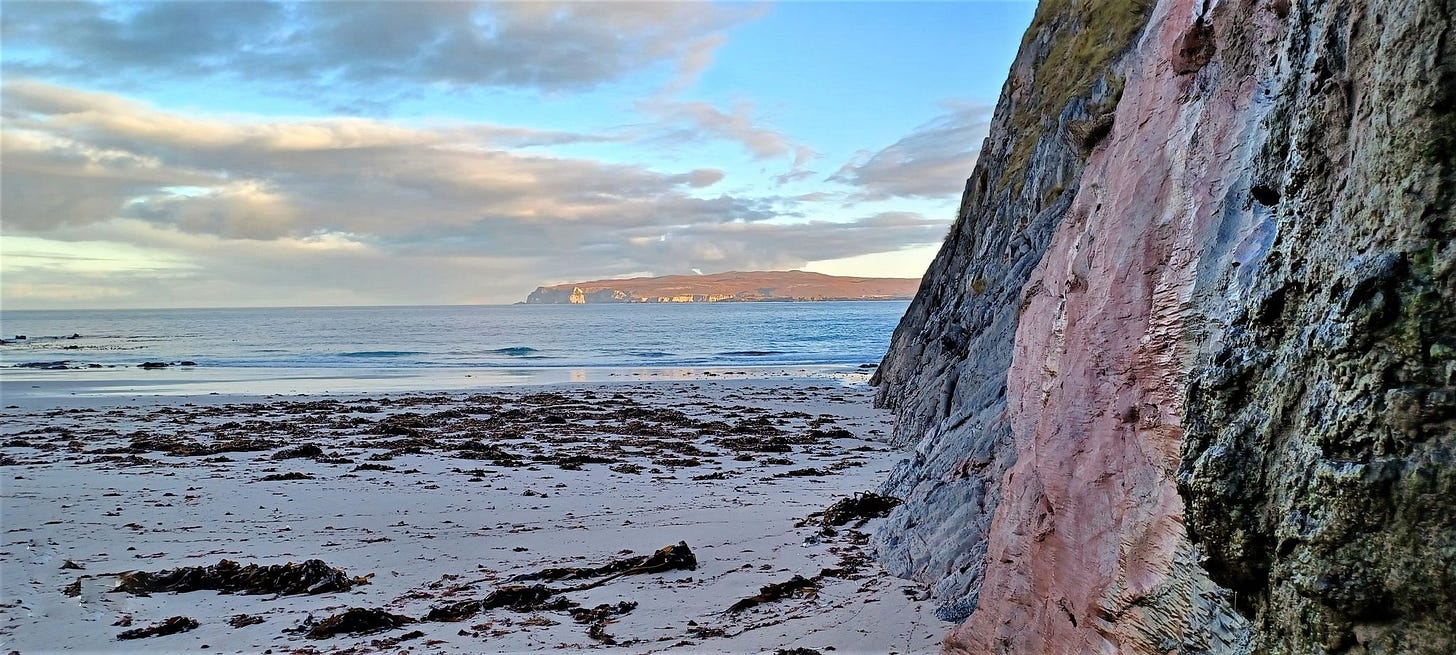The Aftermath of those Northeasterly Storms - Rangers perspective
Exploring the Dynamic Coastline at Faraid Head, Durness
As a dedicated nature enthusiast and ranger, I recently embarked on a journey to Faraid Head, located near the picturesque village of Durness where I’m based, following the rough and tumultuous northeasterly storms. My primary goal was to observe any changes in the topography and the impact of these storms on the local wildlife and environment.
The Transformative Power of Nature
The first thing that struck me was the evident transformation of the landscape. The once familiar lower dune at the east side of Faraid Head had been significantly altered. A large portion of it had been washed away, revealing a rocky foreshore that now serves as a new access point to the beach. This stark change is a reminder of the relentless and transformative power of nature.
A Pristine Beach with Minimal Human Footprint
Despite the storm's impact, the beach presented a remarkably litter-free environment. There were only a few scattered items – an occasional can and bits of fishing rope. This minimal human footprint on such a beautiful stretch of coastline was a heartening sight and a testament to the ongoing conservation efforts in the area.
Wildlife Observations: Beauty and Tragedy
My walk along the beach was not without poignant discoveries. I encountered a few bird casualties, probably victims of bird flu. Among them was a puffin, an unexpected find for this time of year, still adorned with its colorful beak. Intriguingly, a neat pile of breast feathers lay beside it, suggesting I might have inadvertently disturbed a predator during its meal. An oystercatcher and a nearly complete rabbit skin, perfectly skinned except for the feet, were also found. These encounters offered a raw glimpse into the circle of life within this ecosystem, where predators like foxes play a vital role.

Absence of Grey Seals: A Seasonal Observation
During this time of the year, grey seals occasionally pup in this area. However, there was no sign of them, nor had there been any reports of stranded seal pups. It's worth noting that Whiten Head on Loch Eriboll is the primary breeding ground for seals in this region. This absence could simply be a seasonal variation, highlighting the ever-changing dynamics of wildlife patterns.

Capturing the Essence: A Scenic Photograph
To encapsulate the beauty and tranquility of this area, I captured a photo of Whiten Head, as seen from Faraid Head. This image serves as a visual reminder of the serene and rugged beauty of Scotland's northern coastline, a landscape constantly shaped and reshaped by the forces of nature.
My walk along Faraid Head was not just a journey through a changing landscape, but also an insightful experience into the resilience and adaptability of nature. It's a poignant reminder of the delicate balance between the natural world and the impacts of environmental changes. As we continue to explore and appreciate these natural wonders, it's crucial to remain mindful of our role in preserving them for future generations.
Donald Mitchell is a passionate ranger and nature enthusiast, the author dedicates their time to exploring and conserving the natural landscapes of Scotland, with a particular focus on the northern coastlines and their unique ecosystems. You can join Donald on Tuesday 5th December to discover the magic of Faraid Head for yourself.






